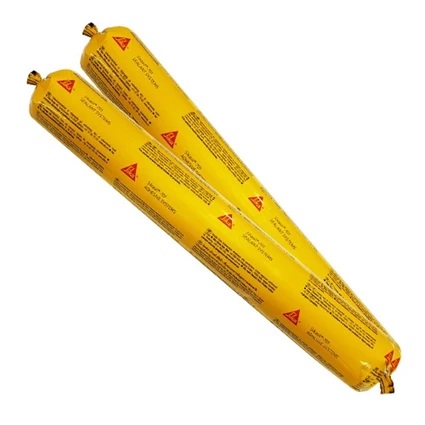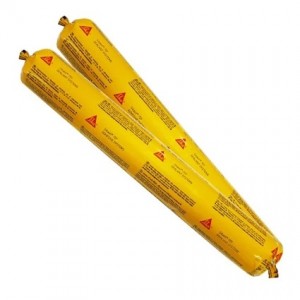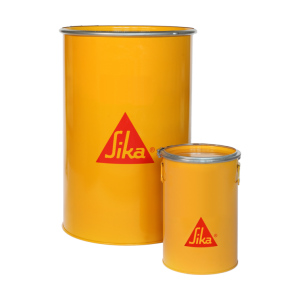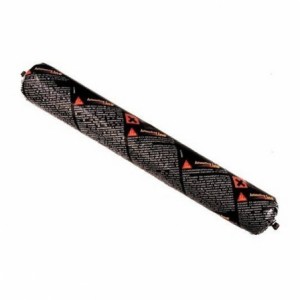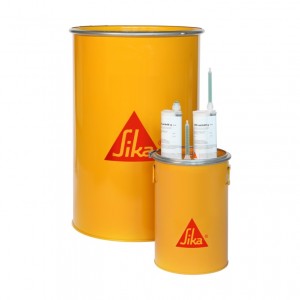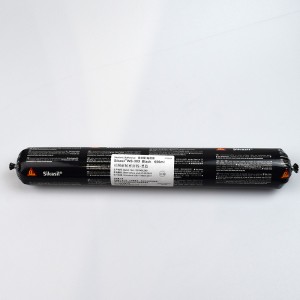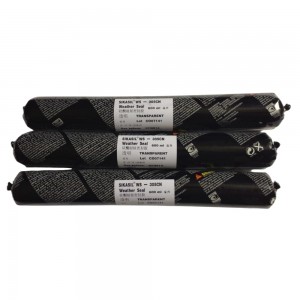Sikasil®-701 1-part silicone based weathersealant
Features &Benefits
- -Neutral cure
- -Very good resistance to weathering
- -Good adhesion to most common building materials
- -Movement capability ± 35 % (ASTM C719)
- -Very easy to apply
Product Information
Composition
Neutral cure silicone
Shelf Life
12 months from the date of production
Storage Conditions
The product must be stored in original, unopened and undamaged sealed packaging in dry conditions at temperatures between +5 °C and +25 °C. Always refer t o packaging.
Density
~1.40 kg/l
Technical Information
Shore A Hardness
| After 28 days | ~35 |
Secant Tensile Modulus
| ~0.65 N/mm2 ~0.70 N/mm2 |
(100 % elongation +23 °C)
(100 % elongation -20 °C) |
Elastic Recovery
| ~0.85 % |
Tear Propagation Resistance
| ~14 N/mm |
Movement Capability
| ± 35 % |
Service Temperature
−40 °C to +100 °C
Joint Design
The joint width must be designed to suit the joint movement required and the movement capability of the sealant. The joint width shall be ≥ 6 mm and ≤ 45 mm. The joint depth shall be ≥ 6 mm and ≤ 15 mm. A width to depth ratio of 2:1 must be maintained (for exceptions, see table below). Typical joint dimensions.
| Joint Width (mm) | Joint Depth (mm) | Joint Length /600 ml ssg |
| 6 | 4 | 25 m |
| 9 | 5 | 13 m |
| 12 | 6 | 8 m |
All joints must be correctly designed and dimensioned in accordance with the relevant standards, before their construction. The basis for calculation of the necessary joint widths are the type of structure and its dimensions, the technical values of the adjacent building materials and the joint sealing material, as well as the specific exposure of the building and the joints. For larger joints please contact Sika technical service.
Applications
Backing Material
Use closed cell, polyethylene foam backing rods.
Sag Flow
Good
Ambient Air Temperature
+5 °C min./ +40 °C max.
Substrate Temperature
+5 °C min./ +40 °C max. Minimum +3 °C above dew point temperature.
Curing Rate
~3 mm/24 hour (+23 °C / 50 % r.h.)
Skinning time
~30 minutes (+23 °C / 50 % r.h.)
APPLICATION STEP
SUBSTRATE PREPARATION
The substrate must be clean, dry, sound and free from oils, grease, dust, cement laitance and loose or friable particles. For optimum adhesion, joint durability and critical, high performance applications such as joints on multi-storey buildings, highly stressed joints, extreme weather exposure or water immersion / exposure. The following priming and/or pre-treatment procedures must be followed:
Non-porous substrates
Float glass, coated glass, anodised aluminium and stainless steel must be pre-treated using Sika® Aktivator-205, Sika® Aktivator-100 or Sika® Cleaner P. Powder coated and PVDF coated metals must be pre-treated using Sika® Aktivator-205. For more details such as application and flash-off times, refer to the most recent Product Data Sheet of the respective pre-treatment product.
Porous substrates
Concrete, aerated concrete and cement based renders, mortars and bricks must be primed using Sika® Primer-3 N or Sika® Primer-210. For more details such as application and flash-off times, refer to the most recent Product Data Sheet of the respective pre-treatment product. Adhesion tests on project specific substrates must be performed and procedures agreed with all parties before full project application. Contact Sika Technical Services for additional information.
Note: Primers and activators are adhesion promoters and not an alternative to improve poor preparation / cleaning of the joint surface. Primers also improve the long term adhesion performance of the sealed joint.
CLEANING OF EQUIPMENT
Clean all tools and application equipment with Sika® Remover-208 immediately after use. Hardened material can only be removed mechanically. For cleaning skin, use Sika® Cleaning Wipes-100.

